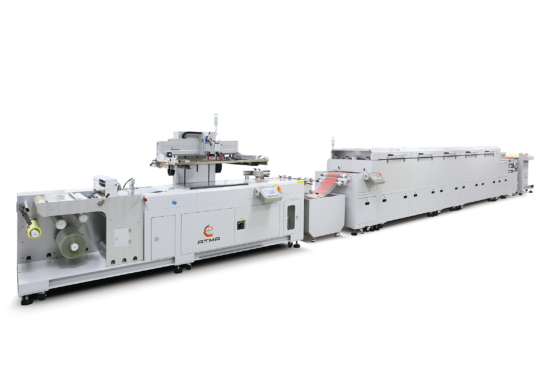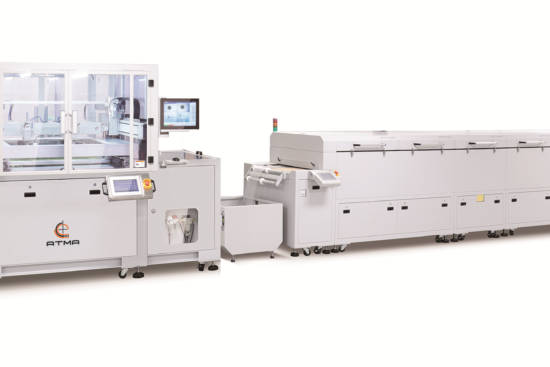
R2R Screen Printing
Roll-to-Roll Screen Printing Machine
In the roll-to-roll-fed screen printing process, flexible substrates, which cannot be run in sheets, or only with difficulty, are processed directly from the roll. In addition, it is possible to integrate further web processing steps easily.
After the so-called “unwinder”, the web is transported and positioned at the printing unit by means of servo-driven rollers in the material transport direction and by means of electronically controlled pairs of dancer rollers at the sides. The material is provided with register holes before the first printing station, which serve as registration marks in the further processing. In sensor-controlled presses, the print is positioned in the transport direction through these register holes and laterally via sensors that register the position of the web edge.
On machines with camera alignment, the material position is detected by 2 cameras in conjunction with 2 register holes. The screen is then aligned print by print according to the camera information.
With sensor alignment, accuracies of +/- 0.1mm can be reached. With camera alignment, accuracies of +/- = 0.02 mm are achieved.
After the material has passed through the subsequent dryer and possibly further ink stations with dryer(s), it is rewound at the end of the process in the “rewinder”. Alternatively, further production steps take place.
Web-fed screen printing presses are usually used as multi-color systems in order to be able to realize several printing processes within one production process.
The production process is particularly suitable for medium and long runs. Web-fed screen printing presses are characterized by short set-up times.
The names of this printing process vary widely, below are some of the common ones:
R2R, R2R printing, roll-to-roll, roll screen printing, roll-to-roll-process, and many more.


